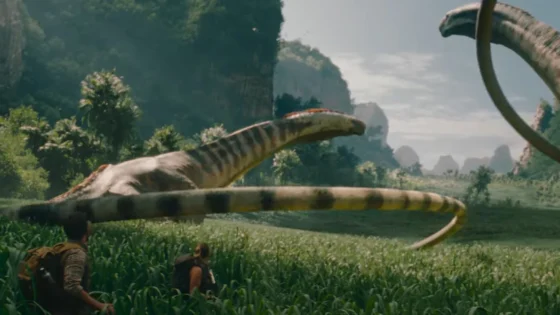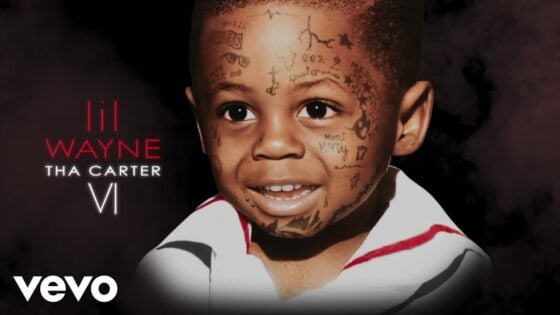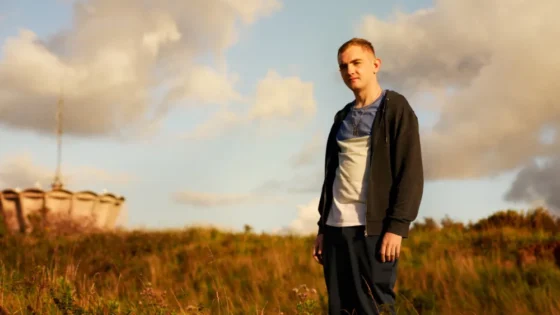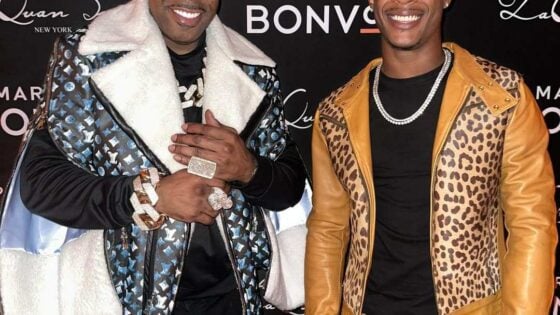Culture
Is The Thing from Another World a Better Movie Than John Carpenter’s The Thing?
Thing One and Thing Two (with apologies to the Cat in the Hat)
The Thing vs. The Thing. Which is better?
I hadn’t been aware that this year is the 40th anniversary of the release of John Carpenter’s The Thing (1982) until I saw the news about Fathom Event’s mishandling of the film’s weekend commemorative limited re-release a few weeks ago: wrong screen ratio, lousy picture quality – that’s no way to salute the return to the screen of a cult classic! Still, Fathom was, apparently, able to clean up their act by the second day of screenings, and even the first day’s bobbling didn’t stop The Thing from breaking into the weekend’s Top 10 earners with over $500,000 pulled in from just 700 screens. I know Mr. Carpenter must be lamenting, “Why couldn’t this have happened forty years ago?”
Anybody who’s a fan of the movie and/or of Carpenter probably knows the story and the reason for his (probable) lament: The Thing was Carpenter’s first project with a major studio (Universal) and his biggest budget up to that time ($15 million; twice the combined cost for his previous four features). But the preview screenings went badly, Universal rolled out a promotional campaign Carpenter (and just about everyone else involved with the film) thought was a film-killer (that awful poster with a guy in a parka and a big sparkle where his face was supposed to be), most of the reviews were devastating, and the movie died early (it was not, as popularly thought, a flop, doing $19.6 million, but was hardly a hit). As a result, Universal pulled the plug on their multi-picture deal with Carpenter and the director has often reflected that the failure of The Thing probably changed the course of his career.
But – again, as fans know – the story didn’t end there. The Thing found a second life in the then-new home video market and on cable, and, in time, critics re-evaluated the film, many considering it Carpenter’s best, some going so far as to say it’s a sci-fi classic, one of the best remakes ever (of 1951’s The Thing from Another World). And now here we are, forty years later, celebrating Carpenter’s self-professed favorite of his films with a triumphant, celebratory re-release.

Inevitably, devotees of the 1951 flick and Carpenter’s remake will start mulling over the eternal question arising out of all remakes: which is better? The remake or the original? For myself, I’ve gone through a bit of an evolution on the subject myself.
I first saw the movie in 1983 when I was working at HBO, screening it to anticipate possible viewer complaints. Like most of the reviewers of the time, I was turned off by the gore, by the gross metamorphosis effects, by an approach I felt was – as Newsweek’s David Ansen wrote of the film at the time – “atrocity for atrocity’s sake.”
But something kept drawing me back to the movie, and in time, I found myself watching it again…and again. I don’t know; maybe repeated viewings just inured me to FX-master Rob Bottin’s bizarrities, or maybe as the years went by, what had seemed so shocking in 1982, after decades of slasher flicks, torture porn, endless Alien and Predator installments, and all the grotesqueries possible with CGI, seemed, well, not run of the mill, but hardly singular. And, once you get past the FX, you get to actually see the storytelling at work.
Despite my at-first turnoff, I came to see there was much to hold me in Carpenter’s film. I did love his clean visual style (working with his favorite cinematographer, Dean Cundey), almost an Old Hollywood classicism. No fussy mise en scene, no gymnastic camerawork, no moves beyond the simple but effective moves which nicely, quietly juiced a shot, no ADD-rhythmed editing. He’s the anti-Michael Bay, the non-DePalma, and when he hits the mark, he shows why simple can be better and best, more so than busy and peripatetic. The Thing, like much of his work, has a crisp pace, it gains a lot from the authenticity of shooting in the Arctic-like environs of British Columbia, and star Kurt Russell is backed by a tight, firing-on-all-cylinders ensemble of Familiar Faces (Donald Moffat, Richard Dysart, David Clennon, Carpenter favorite Keith David, Wilfred Brimley and more). Yeah, there’s a lot I like and admire in John Carpenter’s The Thing.
But is it better than the original?

Well, that’s a thorny question because we’re talking about movies, not some scientifically quantifiable element. I think when you have armies of fans on both sides of the discussion, maybe it’s more a simple question of which one do you like more? “Better” doesn’t come into it. Like a guy I used to work with at HBO used to say, “There’s a reason they make vanilla and chocolate.”
Before Universal went to Carpenter, they’d had Tobe Hooper in mind to direct since they already had him under contract, but the scripts being turned out for Hooper weren’t igniting any greenlighting fires at the studio, so eventually, they turned to Carpenter. After Carpenter was brought on, he was put together with screenwriter Bill Lancaster and together they finally produced a script that got the nod from the studio.
Carpenter had initially been reluctant to take the project on. He was an admirer of the 1951 movie, didn’t think he could top it. But when he was urged to read the source material for the original – John W. Campbell, Jr.’s 1938 novella, “Who Goes There?” – and saw how much that first film had deviated from Campbell’s story, he saw creative room to do something more than a rehash, the opportunity to turn out a work that would be distinctively and uniquely his.
And if you ask me which one I like better, that’s the problem with Carpenter’s The Thing; that it’s distinctively and uniquely Carpenter’s.
*****

By most measures, Carpenter’s The Thing has every advantage over the original: more money (The Thing from Another World was, even by 1950s production value standards, clearly a modest B-picture), state-of-the-art effects (the reason the creature in the original is so rarely – and usually briefly – seen is that even then, the filmmakers knew the makeup on future Gunsmoke star James Arness, who played the critter, wasn’t going to hold up to much scrutiny), more authenticity (shooting in snowbound British Columbia vs some exteriors shot in Glacier National Park but most of the film – including the iconic scene of scientists outlining a UFO buried in Arctic ice – shot in a broiling L.A.).
But as I said, once you get past the still impressive effects Bottin managed in that pre-CGI era (only 22 at the time, Bottin’s work on the film landed him in the hospital from exhaustion) and production values to where you can watch the storytelling at work, in my humble, highly subjective, and I’m-entitled-to-my-opinion-so-screw-you view, Carpenter’s The Thing suffers from two, fundamental storytelling flaws:
- It’s dumb
- It has no heart
I know: OUCH!
Ok, I know it can seem paradoxical to throw around terms like “dumb” and “smart” when talking about monster movies. Dinosaurs tromping around Manhattan, aliens leveling cities, zombies et al, let’s face it, we’re not talking rock-solid science here. But movies can be smart within their premise. You watch a Big Bug movie like Them! (1954), maybe the science around what makes Big Bugs big is absurd, but the movie works with the idea that if there were Big Bugs, this is probably how the authorities and scientists would deal with them; a dumb premise handled smartly. If we treat zombiedom like an honest-to-God plague outbreak instead of spook movie stuff, we get World War Z (2013). And I think this is where The Thing drops the ball.
I’ve seen a number of interviews over the years with John Carpenter. He’s a smart guy, a very smart guy, articulate and insightful about movies, moviemaking, and the movie business. But as a rule (and there are exceptions), his movies tend not to be as nuanced as his opining; they work mostly on a visceral, almost primal we’re-all-still-afraid-of-the-dark level.
Most of Carpenter’s movies don’t make a lot of real-world sense. That’s not a knock: they’re not supposed to. Halloween (1978) is a boogie-man story, The Fog (1980) is a campfire ghost story. They’re practically elemental, tickling deep-seated fears we’ve had since we could toddle, and that’s their strength. Where Carpenter gets into trouble sometimes is with a story that demands a bit more than that. He can fall into that easy movie trap of making things happen because he wants them to happen; not because they make sense

In that regard, I always think of his Prince of Darkness (1987), an intriguing concept (a liquified Satan is trapped in a canister in the cellar of an abandoned church) that’s part Dan Brown, part William Peter Blatty. But Carpenter skips past all the intriguing and, one would think, natural dramatic elements (I mean, c’mon, you’ve got Satan in the basement, and there seems to be a general lack of world-rocking among the characters as to what this means about how the world works. Seriously?), to get some routine zombie movie-type chills going.
Ok, let’s get specific. The 1951 movie is set in a research station in the Arctic. That station is populated with scientists. They have a greenhouse because they’re doing some botany science stuff. The UFO that crashed into the ice was detected by their sky-gazing monitors. When they get to talking about what they’ve got on their hands with the rampaging UFO crash survivor, they throw a lot of science around. In other words, you’ve got a bunch of scientists doing and talking sciencey stuff.
The 1982 movie is set in a research station in the Antarctic. It’s populated with — … Well, I’m not sure because no one seems to do much of anything. They hang around the mess hall, playing cards and ping pong. David Clennon smokes weed and watches videotape reruns of game shows. Kurt Russell drinks and gets ticked off losing at chess to a computer. Carpenter’s gang seem more like a bunch of college kids hanging around a dorm on a slow weekend. They’re in that place not because they have, well, you know – jobs – but because Carpenter and Lancaster need them to be there for The Thing to prey on. It’s not a setting, it’s a set-up.
Then there’s the whole thing of this “research station” having quite the armory: there’s an awful lot of guns in this place, plus quite a few military-grade flamethrowers and what appears to be an endless supply of dynamite. It doesn’t make any sense for all that hardware to be there…except you couldn’t do those admittedly nifty action sequences without it.
So, a bunch of guys stranded in the middle of the Antarctic for no particular purpose and armed to the teeth to boot. Sue me, but it was easier for me to buy into the shapeshifter from outer space than that stuff.
And this segues into my second point: the movie has no heart.
*****

Besides being repelled by The Thing’s gore factor (and, in its time, it was pushing limits), a consistent criticism had to do with the characters…or perhaps I should say, the lack thereof. A few examples of that knock:
Film critic David Kehr: “…hard to tell who’s being attacked, and hard to care.”
And Roger Ebert: “…superficial characterization and implausible behavior.”
At the center of the action in the 1951 movie was the crew of an Air Force supply plane led by Kenneth Tobey. And this gets us into a little digression here about who is really behind The Thing from Another World being as good as it is.
There’s been a lot of back-and-forth over the seventy-odd years since the movie came out about who the real auteur behind the movie is: the credited director, Christian Nyby, or the credited producer, legendary director Howard Hawks. James Arness would later say it was Hawks. Kenneth Tobey said it was Nyby. Some said Hawks was directing from the sidelines, others that he was just making suggestions to Nyby. Nyby would, many years later, say it was he – Nyby – but aspiring to a style by a director he greatly admired: Hawks.

The reason for the debate is Hawks’ style is all over The Thing…: the professionalism, teamwork, and camaraderie of the aircrew, the independent, tough-as-the-boys woman with a thing for Tobey (Margaret Sheridan), and most distinctively, the often dry, wry dialogue zinging back and forth in an overlapping manner, delivered at a machine gun pace (it’s like someone lifted the template from Hawks’ His Girl Friday [1940] and laid it over The Thing… saying, “Play it like that”).
On the other side of the debate, The Thing from Another World doesn’t play like any of Nyby’s other work. Nyby had started out as an editor, and had cut a couple of Hawks’ classics – To Have and Have Not (1944) and The Big Sleep (1946) – which is no doubt why Hawks tapped him to direct The Thing… , but after that film, with hardly an exception, all Nyby’s work was in TV and fairly standard at that.
My point being that, on that issue of heart? That’s Hawks all over
Charles Lederer is the credited screenwriter on the Hawks/Nyby The Thing… Lederer was no B-movie hack, or a genre demon. He was renowned for the acidic wit of his material (he’s uncredited on Orson Welles’ The Lady from Shanghai [1948] which gives you some idea of his flavor and his range) and probably one of the best examples of his style from that time is his adaptation of the Ben Hecht/Charles MacArthur play The Front Page into His Girl Friday for – guess who? — Howard Hawks.

But, besides doing some uncredited work on the script himself, Hawks also brought in some impressive doctors to juice the screenplay still further. Some sources name an uncredited Ben Hecht. Prowl around the internet a bit and William Faulkner is also mentioned (besides being one of the great figures in American literature, Faulkner maintained a decades-long working relationship with Hawks doing credited and uncredited work on a number of the director’s films including To Have and Have Not and The Big Sleep).
The end results are characters – especially that aircrew – that are so vividly and plausibly defined that you could take them out of that flick and drop them into any kind of story where they’d be soldiers, cops, firefighters, guys on an oil rig, truckers, guys working in a warehouse et al and they’d play without requiring any changes or even tweaks to their characters. They might just as well be the aircrew in Hawks’ WW II action-adventure, Air Force (1943)(on which Faulkner also did uncredited work). The writers give them scenes that don’t necessarily drive the plot (especially in the opening scenes) but establish the Band of Brothers-like friendship among them, that gives us a sense – sometimes only partly alluded to as in any conversation among kiddingly ball-busting familiars – of their shared history.
Here are some examples of what I’m talking about:
Lt. McPherson: What if he can read our minds?
Eddie: He’ll be real mad when he gets to me.
And
Dr. Chapman: Find anything, Captain?
Hendry: Not a sign. We poked into every snowbank within miles.
Bob, Crew Chief: Barnes flushed a polar bear.
Cpl. Barnes: Sure did.
Dr. Chapman: Scare you?
Cpl. Barnes: Not after I saw it was only a bear.
And let’s not forget that brassy lady:
Hendry: I’ve given all the orders I want to give for the rest of my life.
Nikki: If I thought that was true I’d ask you to marry me.

And that’s what I mean about “heart”: characters so three-dimensional, we care what happens to them, even beyond whether they survive the perils of the story: they’re good company, they’re fun to watch bounce off each other. They’re real, they live.
In Carpenter’s The Thing, the characters barely exist. They don’t interact much, nor do they seem to get along much. In fact, that whole Carpenter crew is a surly, sulky bunch, and seem handpicked to get on each other’s nerves even before The Thing shows up. And when it does…
They squabble…because Carpenter/Lancaster need them to squabble. When one of their number gets Thinged, there’s not much in the way of regret or mourning. Well, just once: when one of the gang gets Thinged and Kurt Russell has to incinerate him, Donald Moffat goes on a bit about how he and the dead guy had been friends for years. Really? Because I don’t remember them as much as saying hello to each other before that.
And as for witty dialogue? I do admit, I always love watching David Clennon’s stunned face when the head of one of the Thinged group detaches itself from the body and goes crawling off on its own, and Clennon mutters, “You’ve got to be fucking kidding.”
Other than that, I can’t think of another line from the movie worth quoting.
*****

Lecture time.
Explaining why, at a certain point in his career, Alfred Hitchcock began regularly casting big-name stars in his movies, Hitchcock explained that the faster and more plot-driven a movie was, the less time you had for character development. His solution was to hire established stars like James Stewart and Cary Grant because he knew audiences would immediately root for them. It was a shortcut.
(Superhero movies tend to work the same way; the characters have already been established even before the first frame of the film runs through a camera. Gives you more time for epic – and epically long – CGI battles.)
Hitchcock was right: character development takes time, and when you’re dealing with ensembles, that can be a clock-eater. But, if you do it well…
Some of my favorite ensemble movies are The Magnificent Seven (1960) and The Great Escape (1963) (both directed by John Sturges), and The Flight of the Phoenix (1965) and The Dirty Dozen (1967) (both by Robert Aldrich). There’s a reason the running times on these flicks are 2:08, 2:52, 2:22, and 2:30 respectively; both directors knew that to get the audience to care about individual members of a group, time had to be spent letting the audience get to know them. That’s why we feel bad when fifty of Escape’s recaptured POWs are gunned down by the Gestapo; why we remember Jim Brown getting cut down by machine gun fire as he makes his getaway dash in Dozen…and so on.
But Carpenter/Lancaster don’t give their ensemble that kind of breathing room. We get types because the movie needs types. David Keith is a surly hothead even before the fireworks start because Carpenter/Lancaster need a hothead to needlessly (and usually pointlessly) buck Russell’s assumption of authority; Moffat is the ineffective quasi-military boss because the ineffective military boss is a common type; Clennon is a dope-smoking Chariots of the Gods-reading Space Cadet… It goes on and on like this. Some of the first characters to get Thinged don’t even have much of a type; characterless characters to supply The Thing with victims. No wonder Kurt Russell doesn’t give a shit when Moffat starts whining about his buddy’s death. I didn’t care either.
Don’t get me wrong: I think John Carpenter’s The Thing is masterfully done if you’re talking about the obvious craftsmanship in its execution. But it’s empty. Visceral thrills, like a roller coaster ride, but with just as little dramatic heft.
So why the re-evaluation? Why is the film better thought of now than it was forty years ago if I’m whining that the weaknesses it had then are still there? Am I just an old fart (undoubtedly part of it)? Is this just a gap in generational sensibilities (certainly another part)?
Or maybe it’s that the calendar has been very kind to the film, time sanding off some of the toe-stubbing, eye-poking edges.
*****

The gore factor, as I already discussed, doesn’t seem to matter very much anymore. In fact, I think because of CGI, it’s easier to appreciate both the creative and technical accomplishments Rob Bottin pulled off having to rely on prosthetic and mechanical devices. Some of the imagery he came up with (I’m thinking particularly of the split face on a recovered Thing body) are nothing less than haunting, visions truly out of a fevered nightmare.
But the dumb and heartless part?
In an era dominated by superhero films and over-the-top action flicks, I’m not sure dumb matters much anymore. The idea of trying to render the incredible within a context that at least gives the appearance of credibility just doesn’t seem to be necessary to get audiences to go along for the ride.
And as for character building – and I can probably get some pushback on this – movies have become so much more fast-paced then they were in 1951 (or even 1982) that I think the mainstream, youth-skewed sci fi and action audience has neither the patience nor appetite for the kind of life-sized character building that was more commonplace in earlier generations of action films. By contemporary standards – and even measured against the 1982 film – the 1951 The Thing… is a slow starter, and if you’re not doing an indie feature, mainstream audiences want you to get down to business pretty quickly, and The Thing does that.

I’d also suggest that the familiarity which comes from repeated viewings of The Thing gives fans an impression of character and relationships that really aren’t there. In this, I have to give Carpenter credit for casting a terrific ensemble that through a combination of ability and innate charisma breathes whatever little life their characters have into these Antarctic dorm rats.
Conclusion: not to take anything away from Carpenter’s skill, but I believe an element of the re-think on The Thing is it had to wait forty years to find its audience.
*****
I’m not saying The Thing from Another World is better than The Thing (although I acknowledge it can sound like that’s what I’m saying). I’m telling you why I like the older film better than the new one, even though I like the 1982 flick. If I didn’t, I wouldn’t keep watching it. But I find the older one warmer, more human…more fun.
As the man said, that’s why they make vanilla and chocolate.



































Andrew Kidd
July 5, 2022 at 10:40 am
Thank you! This is an argument I’ve had to make time and time again whenever discussing either film, but never so eloquently! Here’s my own take on both films (but mostly the Hawks-Nyby one): https://theladyfromplanetx.wordpress.com/2021/09/26/the-real-thing-an-intellectual-defense-of-howard-hawks-and-christian-nybys-the-thing-from-another-world/comment-page-1/
Bill Mesce
July 5, 2022 at 3:31 pm
I don’t know about eloquent, but thank you for the compliment. Look, I understand the fans for Carpenter’s flick, and I’ve also come to recognize that what we grow up with becomes our baseline so the stuff that predates us can be judged rather harshly. As I said in the piece, if I had to sum it up, Hey, Carpenterites, I get it…but it’s not my thing.
Mattheus
March 25, 2023 at 12:47 pm
Meh “they have no heart” seem to parroting what other critics thought of the movie
One could then argue that the ’50s movie was more a “murica hell yeah” action flick than horror
Beside, North Pole is closer to civilized world, Antartica is not, so one can understand how those in 1982 felt more isolated and less prone to cameratism. I don’t think they aren’t three dimensional as that same scene you criticized showed exactly that and, as the movie goes on, it showed us their character, for good or bad
Mattheus
March 25, 2023 at 12:52 pm
Also it’s pretty clear the people in Antartica, are scientists
)show don’t tell)
Bill Mesce
March 27, 2023 at 12:52 pm
I’d make the point it’s only clear because that’s what they’re supposed to be, but until the creature shows up, they don’t seem to do much of anything except hang out. But that’s just my take.